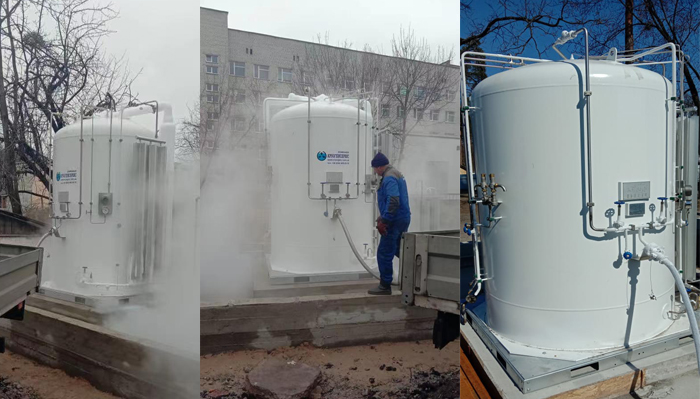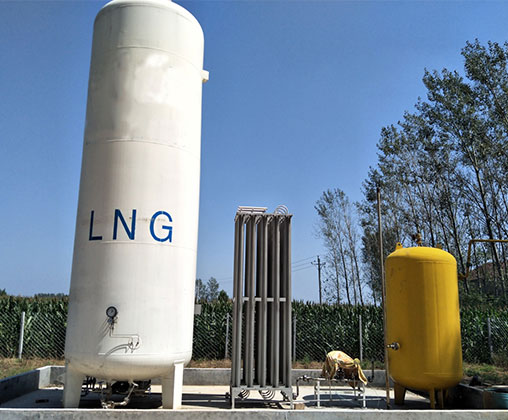Cryogenic Tanks for LOX, LN2, LAr, and LCO2
Cryogenic Tanks for LOX, LN2, LAr, and LCO2: Specifications and Considerations
Cryogenic storage tanks are indispensable in industries that require the storage and transportation of liquefied gases, particularly liquid oxygen (LOX). These specialized tanks are engineered to maintain extremely low temperatures, ensuring the liquid state of the stored substance. This article delves into the specifications and considerations related to cryogenic tanks designed for liquid oxygen, alongside parameters for tanks used with other cryogenic liquids like liquid nitrogen (LN2), liquid argon (LAr), and liquid carbon dioxide (LCO2).
Cryogenic Liquid Tank Parameters: A Detailed Overview
The following table outlines the key parameters for various cryogenic liquid tank models, showcasing their suitability for LOX, LN2, LAr, and LCO2 storage:
| Model | Working Pressure (MPa) | Working Medium | Volume (m³) | Outside Size (mm) | Weight (kg) |
|---|---|---|---|---|---|
| CFL5/0.8 | 0.8 | LOX/LN2/LAr | 5 | φ2000 * 5130 | 3412 |
| CFL10/0.8 | 0.8 | LOX/LN2/LAr | 10 | φ2100 * 7170 | 5378 |
| CFL20/0.8 | 0.8 | LOX/LN2/LAr | 20 | φ2500 * 8760 | 8255 |
| CFL30/0.8 | 0.8 | LOX/LN2/LAr | 30 | φ2900 * 8960 | 12899 |
| CFL50/0.8 | 0.8 | LOX/LN2/LAr | 50 | φ3100 * 12060 | 18960 |
| CFL100/0.8 | 0.8 | LOX/LN2/LAr | 100 | φ3600 * 17250 | 34480 |
| CFL5/1.6 | 1.6 | LOX/LN2/LAr | 5 | φ2000 * 5130 | 3945 |
| CFL10/1.6 | 1.6 | LOX/LN2/LAr | 10 | φ2000 * 7930 | 6787 |
| CFL20/1.6 | 1.6 | LOX/LN2/LAr | 20 | φ2400 * 9680 | 10744 |
| CFL30/1.6 | 1.6 | LOX/LN2/LAr | 30 | φ2700 * 10500 | 14640 |
| CFL50/1.6 | 1.6 | LOX/LN2/LAr | 50 | φ3000 * 12760 | 23370 |
| CFL5/2.16 | 2.16 | LCO2 | 5 | φ2000 * 4250 | 4450 |
| CFL10/2.16 | 2.16 | LCO2 | 10 | φ2100 * 7130 | 6986 |
| CFL20/2.16 | 2.16 | LCO2 | 20 | φ2500 * 8760 | 11328 |
| CFL30/2.16 | 2.16 | LCO2 | 30 | φ2900 * 8960 | 17961 |
| CFL50/2.16 | 2.16 | LCO2 | 50 | φ3200 * 11300 | 26097 |
| CFL100/2.16 | 2.16 | LCO2 | 100 | φ3500 * 18250 | 49627 |
Note: LOX = Liquid Oxygen, LN2 = Liquid Nitrogen, LAr = Liquid Argon, LCO2 = Liquid Carbon Dioxide
Key Considerations for Selecting a Cryogenic Tank
Working Pressure
The working pressure of the tank dictates the maximum pressure the tank can safely contain during operation. Selecting the appropriate working pressure is crucial for safety and operational efficiency. It ensures that the tank can handle the pressure fluctuations that occur during the storage and transportation of cryogenic liquids.
Volume
Tank volume needs to align with the expected usage rate and storage duration of the cryogenic liquid. Careful consideration of volume requirements prevents frequent refills and ensures a continuous supply. This is particularly important in industries where downtime can be costly.
Dimensions and Weight
The physical dimensions and weight of the tank are important for transportation, installation, and space allocation. Verify that the tank dimensions are compatible with the installation site to avoid logistical issues. The weight of the tank also affects the structural requirements of the installation site.
Working Medium
While the table focuses on LOX, LN2, and LAr, it's important to choose a tank specifically designed for the intended cryogenic liquid. Each liquid has unique properties that require specific tank design and materials. For example, liquid carbon dioxide (LCO2) has different thermal and pressure characteristics compared to liquid oxygen, necessitating different design considerations.
Painting and Coating Specifications
The external coating of a cryogenic tank plays a vital role in protecting the tank from environmental factors and corrosion. Our cryogenic tanks undergo a meticulous painting process:
Topcoat: The finish coat utilizes acrylic polyurethane or other high-quality imported coatings that offer superior protection and aesthetics.
Multi-Layer Application: The painting process involves two primer coats followed by one finish coat, ensuring comprehensive coverage and durability.
Total Paint Thickness: A minimum paint thickness of 250 microns guarantees long-lasting protection against corrosion and weathering.
Vacuum Insulation for Optimal Performance
To maintain the extremely low temperatures required for cryogenic liquids, our tanks utilize a high-performance vacuum insulation system:
Inner Cylinder Preparation: The inner cylinder undergoes a circulation heating process to eliminate any trace of moisture. This meticulous preparation ensures a stable vacuum environment.
Vacuum Stability: Rigorous static observation confirms that the vacuum level remains consistent for at least one month, guaranteeing exceptional thermal insulation.
Nitrogen Gas Testing: Prior to operation, tanks are pressure-tested using dry nitrogen gas. This ensures that the entire pressure testing procedure is free from oil and water contamination, safeguarding the integrity of the insulation system.
Valve Quality and Customization
The performance and reliability of cryogenic tanks are heavily reliant on the quality of the valves used. We offer:
High-Quality Chinese Valves: Our standard tanks are equipped with reliable, high-quality valves sourced from reputable Chinese manufacturers.
Imported Valve Options: We can also accommodate specific customer requests for imported valves, providing flexibility in component selection.
Certifications and Compliance
Our company adheres to the highest industry standards and holds the following certifications:
National-Level A2 Pressure Vessel Manufacture License
D1/D2 Pressure Vessel Design License
ISO9001 International Quality System Certificate
GC2/GC3 Pressure Piping Design License
GC2/GC3 Pressure Piping Installation License
CCS Authentication
CE Authentication
ASME Authentication
These certifications demonstrate our commitment to quality, safety, and compliance with global regulations in the design, manufacturing, installation, and maintenance of cryogenic tanks. The company is well-equipped to offer comprehensive solutions, including engineering design, installation, inspection, and maintenance services for various cryogenic applications.












Comments